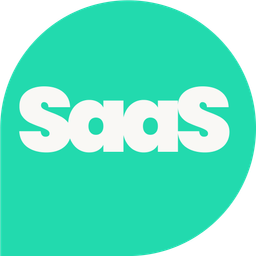The SaaS landscape is noisy, and every day there are new developments and ‘movements’ which claim to be on the verge of ‘changing the game’, but there’s one in particular that has stuck, and that’s product-led growth.
Across the SaaS world countless world-beating organizations have reaped the benefits of a product-led strategy. But what does an effective product-led strategy look like in practice? In this article, we’re gonna learn from the real heavy-weights in the arena to find out how your product led strategy can pack a serious punch!
But first, a quick refresher course on product-led growth.
- What is product-led growth?
- Why is product-led growth important for SaaS companies?
- The problem with a sales-led approach
- The key qualities of product-led growth
- The 7 top examples of product-led growth in SaaS
What is product-led growth?
While SaaS companies have historically relied heavily on marketing and sales for customer acquisition and retention, a product-led growth strategy allows SaaS companies to grow efficiently and sustainably by utilizing the strength of the product to attract customers.
It’s the SaaS-y equivalent of putting your money where your mouth is. A SaaS product that goes down the PLG route will typically offer users a free trial so they can find the value in the product themselves, hopefully making them more inclined to become paying customers.

Why is a product-led growth approach important for SaaS companies?
Given the difficulty in securing investment and funding in SaaS, the pressure to grow your business sustainably and self-sufficiently is stronger than ever. This is the gift that a product-led growth strategy can offer you, with the benefits including the following:
Lower Customer Acquisition Cost (CAC): Since PLG companies don’t rely on sales and marketing for acquisition, the cost of drawing in new customers is significantly lower, meaning that the customers you do draw drive higher profits.
Greater retention and acquisition: In order for a PLG strategy to work, and for customers to ‘stick’ to your product, you need to have a pretty solid product. The natural consequence of this is higher conversion and retention.
Lower cost of customer support: A company that goes down the PLG route should offer a product that’s pretty self explanatory/ intuitive. It shouldn’t be a super specialist product that requires a lot of support and guidance. In this case, you don’t have to invest in customer support as heavily, as customers will be able to find the value in products themselves.
Greater alignment within your org: When the primary focus of your org is the strength of the product, it’s easier to align your company behind a common goal. So many SaaS companies operate in silos, unable to find a common goal, but a PLG strategy gives you a very definite goal.
Why a sales-led strategy is in trouble
In today’s difficult economic climate, there are many inherent challenges that come with a traditional sales-led strategy, let’s dive into them here:
Higher customer acquisition costs
The sales cycle is long and, as a result, costly. In order to recoup the costs of CAC, you need to have significant customer lifetime value (CLTV), this is the revenue that your customers provide your org across the whole customer journey, which comes with its own challenges, as keeping already converted customers engaged is also going to come with significant costs.
SaaS companies that have high CAC typically have to come with a higher price tag, which can put them at a considerable competitive disadvantage over companies with a more sustainable acquisition strategy.
Disconnect between marketing and sales
Getting a lead qualified and getting a lead to close are two very different things. Just because users have been responsive to your thought leadership strategy doesn’t mean they’re ready to become paying customers.
This disconnect causes major headaches and conflict within SaaS companies, and the two departments are constantly struggling to get into alignment.
But a product-led approach eliminates this conflict (mostly) by making the product the main driver of conversion.

The product is often an afterthought
With a sales-led approach, the sales and marketing side is prioritized as the profit center (the department where the company is making money), whereas the product and engineering side is seen as a cost center. This sometimes means that the strength of the product is relegated to an afterthought, whereas sales is put front and center.
A potential problem because, ultimately, strong retention is driven by a strong product.
The difference between product-led approach and a sales lead approach
In case you're a little hazy on the finer details, we've summed up the key differences in this neat little infographic.
The key qualities in a product-led organization
Before we dive into the key examples of a product-led org, let’s first run through the key qualities of a product-led org worth its salt.
Product-centricity is at its core
The strength of the product is the main focus. In a time when the typical SaaS user wants to try out a product for themselves before they purchase (when was the last time you subscribed to a service without trying out a free trial first?) this approach can be incredibly beneficial.
It works on the premise that users become customers when they see and experience the value in the product for themselves. Recent research also shows that consumers tend to be more skeptical when a sales person tries to sell them on the virtues of a product.
Self serve is the order of the day
Your typical modern user doesn’t want their hand held at every stage of the process, they want to be able to open up their browser and start discovering your product for themselves, meaning your product interface should be intuitive and logical so that the customer can find how your product works for them.

Products that are a little more complicated should come up with learning resources that are apparent to new sign ups so that users can get easily acclimated to the product.
Free trial should be available
In order for PLG to work users have to be able to find the value in your product before they become paying customers. It’s very difficult to get the customer to that ‘aha’ moment if you’re not allowing them to experience the product before they purchase.
This is where the freemium model swoops in for the rescue. The trick is to give users just enough benefit so that they can see the potential in your product, while still withholding just enough that users feel compelled to sign up for a premium version.
So now that we’ve delved into the real benefits of PLG, let’s zoom in on those organizations that have really mastered the art of PLG!

Doing it right: The 7 best examples of product-led growth in SaaS
1. Slack

For many of us Slack is an integral and indispensable part of our work lives. Its pristine visual interface, and intuitive feel make it a prime example of a PLG product. It’s incredibly intuitive, meaning that users know exactly what to do within seconds and can find the benefit within moments.
Best of all, it’s freemium offering allows users to do most of what they need to do in their day to day working lives in terms of collaboration and communication, meaning that customers are immediately won over by it’s value]
2. Airtable

Do spreadsheets give you a real headache? You’re not alone. Luckily, Airtable makes it as frictionless as possible, allowing you to easily integrate data and speak to your other applications. This is a major plus, since a major point of friction between users and software is often that they struggle to make it work with the rest of their tech stack.
But one of the niftiest PLG strategies is this: They allow you to enter in your team members on sign up. Why is this so clever? Because the more people you can get within an org to experience your product, the more likely they are to ‘stick’ to your product.
3. Typeform

What makes Typeform onboarding superior to other SaaS companies? Money isn’t even mentioned in the signup. The onboarding flow is all about getting you to see the benefit of what they can offer you. Within minutes of opening up the browser you’ll not only have created your first survey with Typeform, but you’ll have seen the countless ways you can customize your survey to your liking.
A good PLG approach will lead users to the product’s value as quickly as possible.
4. Calendly

Calendly solved a problem that so many users encounter in their professional lives: The endless back and forth via email trying to coordinate a time for a meeting. On signing up to Calendly, you’ll have a link that you can put in your email sign off so that responders can swiftly schedule some time.
Within seconds of engaging with Calendly, you’ll have synced up the platform within your calendar, meaning you don’t have to worry about scheduling conflicts. This is another great example of an incredibly strong solution that allows users to experience the value of the product within moments of opening up the browser. What is withheld is the opportunity to customize the kind of meetings that you want to set up, as well as the amount of time you want to schedule. Calendly offers tons of value in its sign up process, while offering even more in its tantalizing premium offering.
5. Twilio

On reading these examples so far, you might have come to the conclusion that you should remove any potential friction from the onboarding process. Nine times out of ten you’d be right, but sometimes the right level of friction can help users to find the product swiftly. Twilio asks the user a series of quick questions, meaning that the product can immediately be customized to the user's liking.
6. Surveymonkey

The thing that really stands out about Surveymonkey, it’s just plain fun to use, and for many it’s become synonymous with survey creation. The good will fostered here means that users are going to be less hesitant about signing up for a premium offering once they’ve seen that the product really works and is trust-worthy. After all, they know it’s a good product at this point; folks will pay up for what they know works. This is the very simple principle behind all of PLG
7. Zendesk

As we’ve already discussed. With products that need a bit more adjusting to, it can be helpful to provide self-guided discovery. This is exactly what Zendesk offers. The tutorial process is built in to the onboarding flow, meaning that any friction users might experience is eliminated within minutes, and users can come in to the product armed with the knowledge to get the most value out of it.
FAQ
What does it mean to be product-led ?
Product-led growth is a strategy where the product is the main driver of customer conversion and overall company growth. Product-led companies typically offer a free trial package so that users can experience the value of the product for themselves, therefore making conversion more likely.
How many companies are product-led?
Recent studies have estimated that as many as 58% of SaaS companies are driving a product-led approach, and it's no wonder, considering how most SaaS users today are very skeptical on traditional marketing and sales-led tactics.
What is an example of product-led?
A good example of product-led would be Calendly, who allow you to start using their product during the onboarding process, with no mention of payment, and allow you to use the core components of their product in the freemium offering.
Like what you see? Why not sign up for exclusive insights from some of the mightiest minds in SaaS with a SaaS Alliance membership plan?




